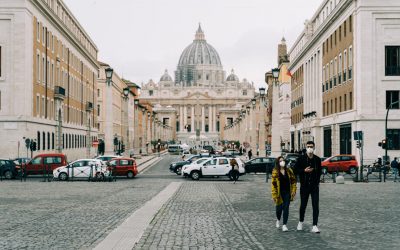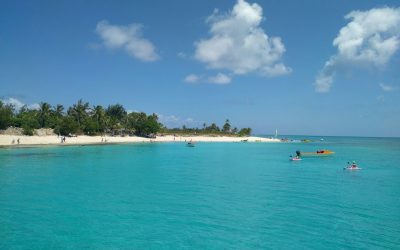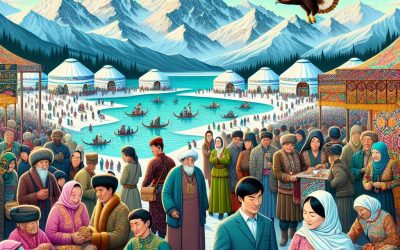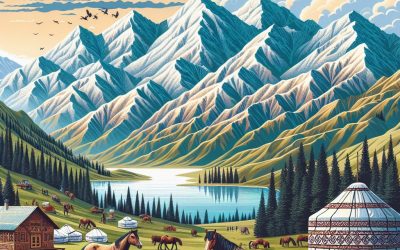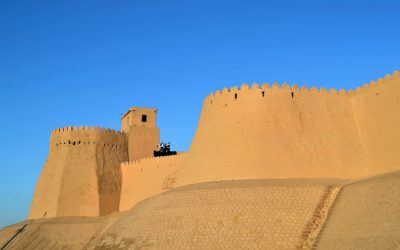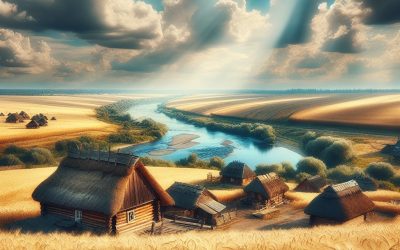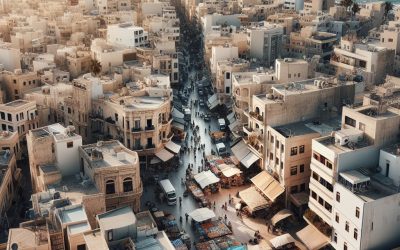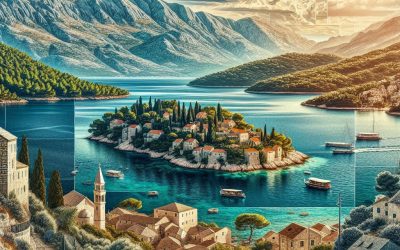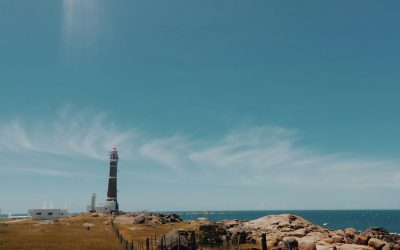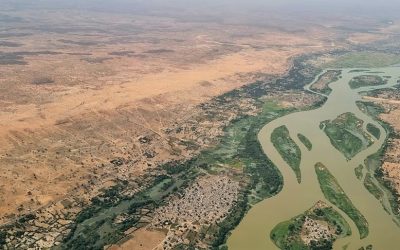World Geography
Geography is the study of the Earth’s landscapes, environments, and the relationships between people and their surroundings. It encompasses both the physical aspects of the Earth, such as its landforms, bodies of water, and climate, as well as the human aspects, including population distribution, cultures, and economies. World geography is a broad field that seeks to understand the complexities of our planet and how humans interact with it. By studying world geography, we can gain a deeper appreciation for the diversity of our planet and the interconnectedness of its various regions.
Geography is a multidisciplinary field that draws on elements of physical science, social science, and humanities. It involves the use of maps, spatial analysis, and geographic information systems (GIS) to understand the Earth’s surface and the processes that shape it. World geography also encompasses the study of human geography, which examines the ways in which people and their activities are distributed across the Earth. By understanding world geography, we can better appreciate the environmental, cultural, and economic challenges facing different regions of the world. This knowledge is crucial for addressing global issues such as climate change, resource management, and international development.
The Five Oceans and Seven Continents
The Earth’s surface is divided into five major oceans: the Pacific, Atlantic, Indian, Southern (or Antarctic), and Arctic Oceans. These vast bodies of water play a crucial role in regulating the Earth’s climate and supporting diverse marine ecosystems. The oceans also serve as important transportation routes and a source of food and other natural resources for human societies around the world.
In addition to the oceans, the Earth’s landmasses are divided into seven continents: Africa, Antarctica, Asia, Europe, North America, Australia (or Oceania), and South America. Each continent has its own unique physical and cultural characteristics, shaped by millions of years of geological processes and human history. From the deserts of Africa to the rainforests of South America, the continents offer a rich tapestry of landscapes and environments for exploration and study.
Major Mountain Ranges and Deserts
The Earth’s surface is also marked by major mountain ranges and deserts that have shaped the planet’s physical and cultural landscapes. The Himalayas, for example, are the highest mountain range in the world and are home to diverse ecosystems and cultures in countries such as India, Nepal, and Bhutan. The Andes in South America, the Rockies in North America, and the Alps in Europe are other prominent mountain ranges that have influenced human settlement patterns and economic activities.
Deserts cover about one-third of the Earth’s land surface and are characterized by low precipitation and extreme temperatures. The Sahara Desert in Africa is the largest hot desert in the world, while the Gobi Desert in Asia is one of the largest cold deserts. Deserts are not only home to unique flora and fauna but have also been important trade routes and cultural crossroads throughout history.
Climate Zones and Biomes
The Earth’s climate is influenced by a variety of factors, including latitude, altitude, ocean currents, and prevailing winds. As a result, the planet is divided into different climate zones, each with its own characteristic weather patterns and ecosystems. The equator, for example, experiences a tropical climate with high temperatures and heavy rainfall, while the polar regions have a cold and dry climate.
These climate zones give rise to different biomes, or large ecological areas characterized by distinct plant and animal communities. The tropical rainforest biome, found near the equator, is home to a diverse array of species and is vital for regulating the Earth’s climate. The grasslands biome, found in regions such as the African savannah and North American prairies, supports grazing animals and has been important for human agriculture throughout history.
Human Geography and Population Distribution
Human geography examines the ways in which people and their activities are distributed across the Earth’s surface. It encompasses topics such as population growth, migration patterns, urbanization, and cultural diversity. Understanding human geography is crucial for addressing global challenges such as poverty, inequality, and environmental degradation.
Population distribution is uneven across the world, with some regions experiencing rapid population growth while others are declining. The majority of the world’s population lives in Asia, particularly in countries such as China and India. Urban areas are also growing rapidly, with more than half of the world’s population now living in cities. This trend has significant implications for infrastructure development, resource management, and social inequality.
Historical and Cultural Geography
Historical geography examines how human activities have shaped the Earth’s landscapes over time. It explores topics such as colonialism, trade routes, and the rise and fall of empires. Cultural geography focuses on how human cultures have developed in different regions of the world and how they interact with their environments.
The Silk Road, for example, was an ancient trade route that connected China with Europe and facilitated the exchange of goods, ideas, and technologies across Eurasia. This historical trade route had a profound impact on the development of cultures and economies along its path. Similarly, cultural geographers study how different societies have adapted to their environments through practices such as agriculture, architecture, and religious beliefs.
The Importance of Geographic Knowledge
Geographic knowledge is crucial for addressing global challenges such as climate change, resource management, and international development. By understanding world geography, we can better appreciate the environmental, cultural, and economic challenges facing different regions of the world. This knowledge is crucial for addressing global issues such as climate change, resource management, and international development.
Geographic knowledge also helps us to understand our interconnectedness with other regions of the world. By studying world geography, we can gain a deeper appreciation for the diversity of our planet and the interconnectedness of its various regions. This understanding can foster a sense of global citizenship and empathy for people from different cultures and backgrounds.
In conclusion, world geography is a complex and multifaceted field that encompasses both physical and human aspects of the Earth’s landscapes. By studying world geography, we can gain a deeper appreciation for the diversity of our planet and the interconnectedness of its various regions. This knowledge is crucial for addressing global challenges such as climate change, resource management, and international development. It also helps us to understand our interconnectedness with other regions of the world and fosters a sense of global citizenship.
FAQs
What is world geography?
World geography is the study of the Earth’s landscapes, environments, and the relationships between people and their environments. It encompasses the physical features of the Earth, as well as the human activity that takes place on it.
Why is world geography important?
World geography is important because it helps us understand the world around us. It provides insights into the physical and human processes that shape our planet, and helps us make informed decisions about how to interact with our environment.
What are the main branches of world geography?
The main branches of world geography include physical geography, which focuses on the Earth’s natural features and processes, and human geography, which examines the relationships between people and their environments.
How does world geography impact our daily lives?
World geography impacts our daily lives in numerous ways, from influencing the weather and climate we experience, to shaping the availability of natural resources and influencing the distribution of populations and cultures around the world.
What are some key concepts in world geography?
Key concepts in world geography include location, place, human-environment interaction, movement, and region. These concepts help geographers understand and interpret the world around them.
The Wonders of Vatican City: Exploring the Holy See’s Rich History and Culture
Vatican City, the world’s smallest independent state, holds a significant place in the hearts of Catholics worldwide as the spiritual and administrative center of the Roman Catholic Church. Nestled within the city of Rome, Italy, Vatican City is home to iconic landmarks such as St. Peter’s Basilica, the Vatican Museums, and the Sistine Chapel. The city-state’s rich history, art treasures, and religious significance draw millions of visitors each year, making it a must-visit destination for those interested in history, art, and spirituality. Summary Vatican City is the smallest independent state in the world, with a rich history dating back to the 4th century. The Vatican Museums house an impressive collection of art and artifacts, including works by Michelangelo and Raphael. The Sistine Chapel is a must-see for visitors, featuring Michelangelo’s iconic ceiling fresco and Last Judgment painting. St. Peter’s Basilica is the largest church in the world and a symbol of the Catholic faith. The Swiss Guard, established in the 16th century, is responsible for protecting the Pope and the Vatican City State. Vatican City: A Brief History of the Holy See The origins of the Holy See can be traced back to the early days of Christianity when St. Peter, one of Jesus’ apostles, is believed to have been appointed as the first Bishop of Rome. Over the centuries, the Bishop of Rome became known as the Pope, and Rome emerged as a significant center of Christianity. In 1929, with the signing of the Lateran Treaty between the Holy See and Italy, Vatican City was established as an independent city-state, ensuring the Pope’s sovereignty over a small territory...
Discovering the Hidden Gems of Vanuatu: A Journey Through the Picturesque Islands
Nestled in the South Pacific Ocean, Vanuatu is an archipelago of 83 stunning islands known for their unspoiled natural beauty, rich cultural heritage, and vibrant local communities. This tropical paradise offers a unique travel experience for those seeking an off-the-beaten-path destination. From lush rainforests and pristine beaches to active volcanoes and vibrant coral reefs, Vanuatu has something to offer every type of traveller. Vanuatu is a great travel destination for those looking to escape the crowds and immerse themselves in a truly authentic island experience. The warm hospitality of the locals, known as Ni-Vanuatu, adds to the charm of this destination, making visitors feel welcome and at home. Whether you’re seeking adventure, relaxation, or cultural immersion, Vanuatu has it all. With a range of activities to suit every interest, from hiking and diving to exploring traditional villages and sampling local cuisine, Vanuatu promises a memorable and enriching travel experience. Summary Vanuatu is an archipelago of hidden gems, offering unspoiled natural beauty, rich cultural heritage, and unique wildlife. Exploring Vanuatu’s natural beauty includes visiting stunning beaches, hiking through lush rainforests, and diving in crystal-clear waters. Vanuatu’s cultural heritage is a journey through time, with traditional villages, ancient rituals, and fascinating stories of the island’s history. The best beaches in Vanuatu offer sun, sand, and serenity, with options for relaxation or adventure, such as surfing, snorkelling, or kayaking. Tasting the flavours of the Pacific is a foodie’s dream, with fresh seafood, tropical fruits, and unique local dishes to try in Vanuatu. Exploring the Unspoiled Natural Beauty of Vanuatu Vanuatu boasts some of the most breathtaking landscapes in the South Pacific, with...
Kazakhstan
Kazakhstan (Kyrgyz Respublikasy (Kyrgyz); Respublika Kirgizstan (Russian) (Kyrgyz Republic)) Capital: Bishkek Population (Estimated July 2012): 5,496,737 Area: 199,945 km2 or 77,199 mi2 Currency: Kyrgyzstan Som (KGS) Official Language: Kyrgyz; Russian Political Information: Parliamentary Republic Official Religion: No Official Religion (approximately 75% of the population are Muslim, 20% are Russian Orthodox and 5% have other religious beliefs). Highest Mountain: Jengish Chokusu (Victory Peak) at 7,439m or 24,406ft GDP Official Exchange Rate (OER is more precise at gauging a countries economic power) (Estimated 2011): $180.1 billion (US$) or (GBP) GDP (OER) Per Capita (per member of the population estimated 2011): (US$) or (GBP) GDP Purchasing Power Parity (PPP is good for gauging living conditions and use of resources but not as accurate as OER. This data has been calculated based on the sum value of all goods and services produced in the country valued at prices prevailing in the United States) (Estimated 2011): $216.4 billion (US$) or (GBP) GDP (PPP) Per Capita (per member of the population estimated 2011): $13,000 (US$) or (GBP) Time Zone (GMT/UTC): +6:00 Wildlife: Counties/Provinces/States: 7 provinces (oblastlar, singular – oblasty) and 1 city* (shaar); Batken Oblasty, Bishkek Shaary*, Chuy Oblasty (Bishkek), Jalal-Abad Oblasty, Naryn Oblasty, Osh Oblasty, Talas Oblasty, Ysyk-Kol Oblasty (Karakol) Leaders: President Almazbek Atambayev, with Prime Minister Omurbek Babanov. Additional: Gained independence from the Soviet Union on the 31st of August 1991. Kazakhstan Kazakhstan, the world’s largest landlocked country, is located in Central Asia and Eastern Europe. It shares borders with Russia, China, Kyrgyzstan, Uzbekistan, and Turkmenistan, as well as the Caspian Sea to the west. The country is known for its diverse landscapes, ranging from the Caspian lowlands to the Altai Mountains and the vast steppes....
Kyrgyzstan
Kyrgyzstan (Kyrgyz Respublikasy (Kyrgyz); Respublika Kirgizstan (Russian) (Kyrgyz Republic)) Capital: Bishkek Population (Estimated July 2012): 5,496,737 Area: 199,945 km2 or 77,199 mi2 Currency: Kyrgyzstan Som (KGS) Official Language: Kyrgyz; Russian Political Information: Parliamentary Republic Official Religion: No Official Religion (approximately 75% of the population are Muslim, 20% are Russian Orthodox and 5% have other religious beliefs). Highest Mountain: Jengish Chokusu (Victory Peak) at 7,439m or 24,406ft Largest River: Time Zone (GMT/UTC): +6:00 Wildlife: Counties/Provinces/States: 7 provinces (oblastlar, singular – oblasty) and 1 city* (shaar); Batken Oblasty, Bishkek Shaary*, Chuy Oblasty (Bishkek), Jalal-Abad Oblasty, Naryn Oblasty, Osh Oblasty, Talas Oblasty, Ysyk-Kol Oblasty (Karakol) Leaders: President Almazbek Atambayev, with Prime Minister Omurbek Babanov. Additional: Gained independence from the Soviet Union on the 31st of August 1991. Kyrgyzstan Kyrgyzstan, officially the Kyrgyz Republic, is a landlocked nation situated in Central Asia. It shares borders with Kazakhstan to the north, Uzbekistan to the west, Tajikistan to the south, and China to the east. Bishkek serves as the capital and largest city. The country boasts a diverse population comprising Kyrgyz, Uzbeks, Russians, and other ethnic groups, each contributing to its rich history and culture. Following its independence from the Soviet Union in 1991, Kyrgyzstan has endeavoured to establish a stable and prosperous nation. The country is renowned for its breathtaking natural landscapes, including majestic mountains, pristine lakes, and verdant valleys. Kyrgyzstan’s cultural heritage is equally impressive, featuring traditional crafts, music, and cuisine that reflect its multicultural society. Visitors to Kyrgyzstan can partake in a variety of activities, from outdoor pursuits such as trekking and horse riding to exploring ancient historical sites. The warmth and hospitality of the Kyrgyz people further enhance the visitor experience....
Uncovering the Hidden Gems of Uzbekistan: A Journey Through Central Asia’s Cultural Heartland
Nestled in the heart of Central Asia, Uzbekistan is a land of rich culture and history that beckons travellers from around the world to explore its ancient cities, vibrant bazaars, and stunning architecture. With a history dating back thousands of years, Uzbekistan has been a crossroads of civilizations and a key stop along the legendary Silk Road. This unique blend of influences is evident in the country’s art, architecture, and cuisine, making it a must-visit destination for those seeking to immerse themselves in a world of beauty and wonder. One of the crown jewels of Uzbekistan is the ancient city of Samarkand, a UNESCO World Heritage Site that has captivated visitors for centuries with its magnificent architecture and storied past. Known as the “Pearl of the Orient,” Samarkand was a key trading hub on the Silk Road and boasts a wealth of architectural wonders, including the iconic Registan Square with its stunning madrasas adorned with intricate tile work and the Gur-e-Amir Mausoleum, the final resting place of the great conqueror Tamerlane. Walking through the streets of Samarkand is like stepping back in time to an era of grandeur and splendour. Bukhara, another ancient city along the Silk Road, offers a glimpse into Uzbekistan’s rich history with its historic bazaars and caravanserais that once bustled with merchants from far-flung lands. The city’s labyrinthine streets are lined with traditional craft shops selling everything from silk carpets to hand-painted ceramics, while its well-preserved medieval architecture transports visitors to a bygone era. Must-visit sites in Bukhara include the towering Kalyan Minaret, the bustling Toki Zargaron bazaar, and the ancient Ark fortress, each offering...
Ukraine (Ukrayina)
Ukraine (Ukrayina) Capital: Kiev (Kyiv) Population (Estimated July 2012): 44,854,065 Area: 603,628km2 or 233,062mi2 Currency: Hryvnya (UAH) Official Language: Ukrainian Political Information: Parliamentary Republic Official Religion: No Official Religion (approximately 50.4% of the population is Ukrainian Orthodox – Kyiv Patriarchate, 26.1% are Ukrainian Orthodox – Moscow Patriarchate, 8% are Ukrainian Greek Catholic, 7% are Ukrainian Autocephalous Orthodox, 2.2% are Roman Catholic, 2.2% are Protestant, 0.6% are Jewish and 3.2% have other religious beliefs) Highest Mountain: Hora Hoverla at 2,061m or 6,762ft Time Zone (GMT/UTC): +2:00 Wildlife: Counties/Provinces/States: 24 provinces (oblasti, singular – oblast’), 1 autonomous republic* (avtonomna respublika), and 2 municipalities (mista, singular – misto) with oblast status**; Cherkasy, Chernihiv, Chernivtsi, Crimea or Avtonomna Respublika Krym* (Simferopol’), Dnipropetrovs’k, Donets’k, Ivano-Frankivs’k, Kharkiv, Kherson, Khmel’nyts’kyy, Kirovohrad, Kyiv**, Kyiv, Luhans’k, L’viv, Mykolayiv, Odesa, Poltava, Rivne, Sevastopol’**, Sumy, Ternopil’, Vinnytsya, Volyn’ (Luts’k), Zakarpattya (Uzhhorod), Zaporizhzhya, Zhytomyr Leaders: President Volodymyr Zelenskyy; Prime Minister Denys Shmyhal Additional: Gained independence from the Soviet Union on the 24th of August 1991. Ukraine Ukraine, the largest country in Europe by land area, is a nation steeped in rich history and cultural diversity. Bordered by Belarus to the north, Russia to the northeast and east, and several Central European nations to the west, Ukraine serves as a bridge between East and West. Its capital, Kyiv, is one of the oldest cities in Eastern Europe, with a history that dates back over 1,400 years. The country is known for its vast landscapes, ranging from the Carpathian Mountains in the west to the expansive steppes in the east, and its fertile plains that have earned it the moniker “the...
Greenland (Kalaallit Nunaat (Greenlandic))
Greenland (Kalaallit Nunaat (Greenlandic)) Capital: Nuuk Population (Estimated July 2012): 57,695 Area: 2,166,086 km2 or 836,330 mi2 Currency: Danish Krone (DKK) Official Language: Greenlandic Political Information: Constitutional Monarchy and Parliamentary Democracy Official Religion: Lutheran Church of Greenland Highest Mountain: Gunnbjørn Fjeld at 3694m or 12, 119ft Largest River: Time Zone (GMT/UTC): Between +/-0:00 and -4:00 Wildlife: Counties/Provinces/States: 4 municipalities (kommuner, singular kommune); Kujalleq, Qaasuitsup, Qeqqata, Sermersooq Leaders: Queen Margrethe II with High Commissioner Mikaela Engell and Prime Minister Kuupik Kleist Greenland Greenland, the world’s largest island, is an autonomous territory within the Kingdom of Denmark. Located between the Arctic and Atlantic Oceans, it is known for its stunning natural beauty, including vast ice sheets, towering mountains, and deep fjords. With a population of around 56,000 people, most of whom are indigenous Greenlandic Inuit, the island has a unique culture and way of life. Greenlandic, an Inuit language, is the official language, and the majority of the population is Christian, with a small minority practising Inuit spiritual beliefs. The capital city, Nuuk, is a vibrant hub of culture and commerce, while the rest of the island is sparsely populated, with small settlements scattered along the coast. Greenland has a rich history dating back thousands of years, with evidence of human habitation going back to the Paleo-Eskimo people who first settled the island. In more recent history, Greenland was colonized by the Norse in the 10th century and later became a Danish colony in the 18th century. In 1979, Greenland was granted home rule by Denmark, and in 2009, it gained self-government, although it still relies on Denmark for defense and foreign affairs. The island’s economy is...
Gaza (The Gaza Strip (قطاع غزة (Arabic) Qiṭā Ġazzah))
The Gaza Strip (قطاع غزة (Arabic) Qiṭā Ġazzah) Capital: Gaza (Main City) Population (Estimated July 2012): 1,710,257 Area: 365 km2 or 140 mi2 Currency: Official Language: Arabic, Hebrew. Political Information: Palestinian territory Official Religion: Muslim (approximately 99.3% of the population are Muslim (predominantly Sunni Muslim) and 0.7% are Christian) Highest Point: Abu ‘Awdah (Joz Abu ‘Awdah) at 105m or 344ft Largest River: Time Zone (GMT/UTC): +2:00 Wildlife: Governorates: Dier al-Balah, Gaza City, Khan Yunis, North Gaza,...
Croatia – Republic of Croatia
Croatia (Republika Hrvatska (Republic of Croatia)) Capital: Zagreb Population (Estimated July 2012): 4,480,043 Area: 56,954 km2 or 21,851 mi2 Currency: Kuna (Kn; plural Kune) Official Language: Croatian Political Information: Parliamentary Republic Official Religion: No Official Religion (approximately 87.8% of the population are Roman Catholic, 4.4% are Orthadox, 1.3% are Muslim, 1.3% have other religious beliefs and 5.2% have no religious beliefs) Highest Mountain: Dinara at 1,831m or 6,007ft Time Zone (GMT/UTC): +1:00 Wildlife: Counties/Provinces/States: 20 counties (zupanije, zupanija – singular) and 1 city* (grad – singular); Bjelovarsko-Bilogorska, Brodsko-Posavska, Dubrovacko-Neretvanska (Dubrovnik-Neretva), Istarska (Istria), Karlovacka, Koprivnicko-Krizevacka, Krapinsko-Zagorska, Licko-Senjska (Lika-Senj), Medimurska, Osjecko-Baranjska, Pozesko-Slavonska (Pozega-Slavonia), Primorsko-Goranska, Sibensko-Kninska, Sisacko-Moslavacka, Splitsko-Dalmatinska (Split-Dalmatia), Varazdinska, Viroviticko-Podravska, Vukovarsko-Srijemska, Zadarska, Zagreb*, Zagrebacka Leaders: President is Ivo Josipović with Zoran Milanović as Prime Minister. Croatia Croatia, located in southeastern Europe, is a stunning country known for its beautiful landscapes, rich history, vibrant cities, and delicious cuisine. Situated on the eastern coast of the Adriatic Sea, Croatia shares borders with Slovenia, Hungary, Serbia, Bosnia and Herzegovina, and Montenegro. The country’s geography is diverse, with a mix of mountains, plains, and a stunning coastline that stretches over 1,100 miles. Croatia has become an increasingly popular tourist destination in recent years, attracting visitors from all over the world. The country offers a wide range of attractions and activities for every type of traveller. From exploring ancient ruins and historical sites to relaxing on pristine beaches and indulging in delicious local cuisine, Croatia has something for everyone. Croatia’s Rich History and Culture: From Ancient Times to Modern Day Croatia has a rich and diverse history that dates back thousands of years. The region was inhabited by various tribes and...
Discovering the Hidden Charms of Uruguay: A Journey Through South America’s Best-Kept Secret
Nestled between Brazil and Argentina, Uruguay often gets overshadowed by its more famous neighbours when it comes to tourism. However, this small South American country has a lot to offer for travellers looking for a unique and off-the-beaten-path experience. From its stunning beaches to its rich cultural heritage, Uruguay is a hidden gem waiting to be explored. Summary Uruguay is a hidden gem in South America that is waiting to be explored. The country’s unique culture and traditions offer a one-of-a-kind experience for visitors. Uruguay’s beautiful beaches are a paradise that should not be missed. The gastronomy of Uruguay is a culinary journey through South America that is sure to delight foodies. Exploring Uruguay’s colonial architecture is a walk through history that is both educational and fascinating. Uruguay: The Best-Kept Secret of South America Uruguay is often overlooked by travellers due to its size and proximity to larger countries in the region. However, this is precisely what makes it such a special destination. With fewer tourists, visitors to Uruguay can enjoy a more authentic experience, interacting with locals and immersing themselves in the country’s culture without the crowds often found in more popular destinations. The benefits of visiting a less touristy destination include a more relaxed atmosphere, genuine interactions with locals, and the opportunity to discover hidden gems that are off the typical tourist trail. The Culture and Traditions of Uruguay: A Unique Experience Uruguay boasts a rich cultural heritage that is a blend of European, African, and indigenous influences. From its traditional music and dance forms like Candombe and Tango to its unique culinary traditions, Uruguay offers visitors...
Exploring the Hidden Gems of Niger: A Journey Through West Africa’s Enigmatic Land
Niger, a land of mystery and intrigue, is a country in West Africa that often goes unnoticed by travellers. Located in the heart of the Sahel region, Niger boasts a rich history and diverse culture that make it a unique destination for those seeking an off-the-beaten-path adventure. From the enigmatic rock formations of the Aïr Mountains to the vibrant markets of Niamey, Niger offers a wealth of experiences waiting to be discovered. Niger is home to a rich cultural heritage that is shaped by its diverse ethnic groups, including the Hausa, Tuareg, and Fulani people. Each group has its own traditions and customs that are celebrated through cultural festivals and events throughout the year. Visitors to Niger can immerse themselves in the local culture by visiting traditional villages, attending music performances, and participating in cultural activities. From the colourful markets of Niamey to the nomadic lifestyle of the Tuareg people, Niger offers a glimpse into a world that is both ancient and vibrant. The natural wonders of Niger are equally captivating, with landscapes that range from the vast Sahara Desert to the lush banks of the Niger River. Outdoor enthusiasts can explore the diverse terrain through activities such as hiking in the Aïr Mountains, camel trekking in the desert, or taking a river cruise along the Niger River. The country’s national parks and nature reserves are also home to a variety of wildlife, including endangered species like the Dama Gazelle and migratory birds that flock to the region seasonally. Wildlife watching in Niger offers a unique opportunity to see animals in their natural habitat and contribute to conservation efforts...
The Allure of the United States of America: A British Perspective
The American Dream is a concept deeply ingrained in the cultural fabric of the United States, symbolising the belief that anyone, regardless of their background or circumstances, can achieve success and prosperity through hard work and determination. However, looking at this phenomenon from a British perspective offers a unique insight into how this ideal is perceived outside of its country of origin. It allows for a comparison between the American Dream and the British Dream, shedding light on the differences in societal values and aspirations. This discussion is important as it provides an opportunity to explore the impact of American culture, politics, economics, education, diversity, fashion, music, media, tourism, and the overall relationship between the UK and the US on British society. Summary The American Dream is viewed differently by British people, with less emphasis on individual success and more on social mobility. American culture has had a significant impact on British society, from music and fashion to language and food. The political landscape of America is closely watched by the British, with concerns over the current administration’s policies and actions. The economic power of the United States is undeniable, but there are concerns over the impact of globalization and trade policies on the UK. American education is often seen as more flexible and innovative than the British system, but also more expensive and unequal. The American Dream: A British Perspective The American Dream is often defined as the belief that anyone can achieve success and prosperity through hard work and determination. It is deeply rooted in the idea of upward mobility and the pursuit of happiness. In contrast,...
